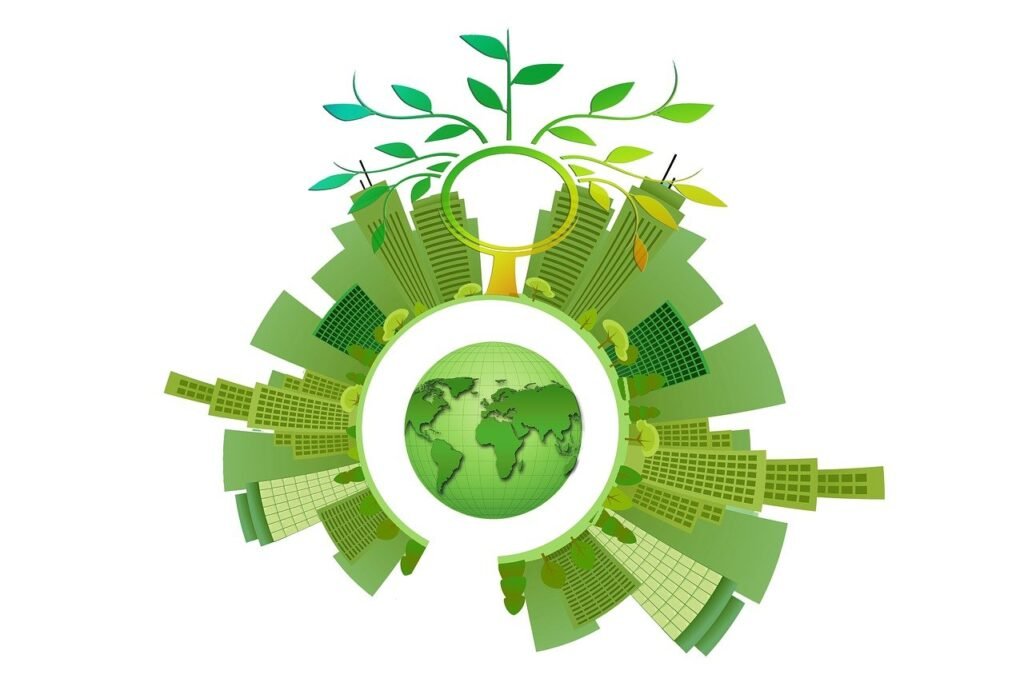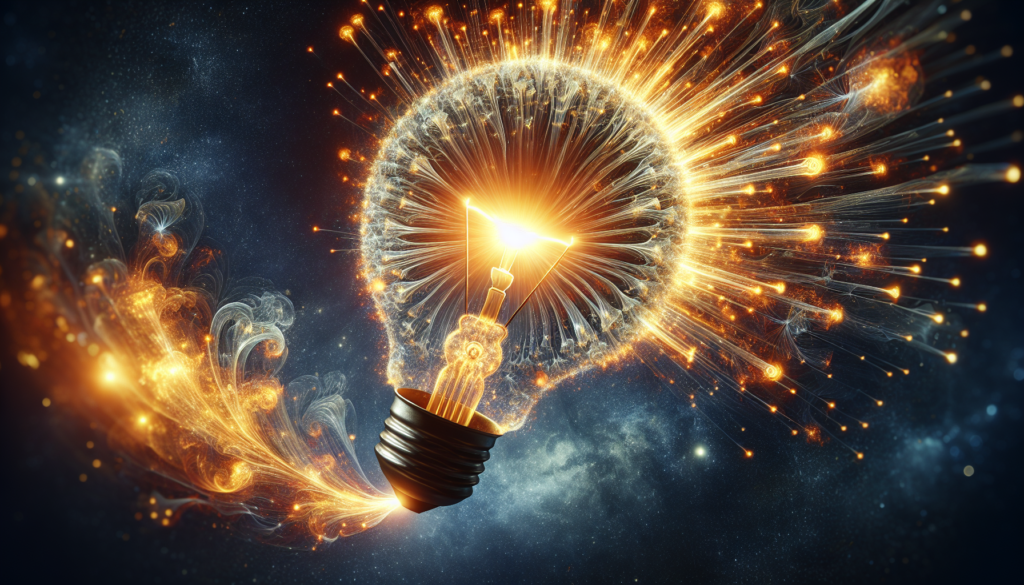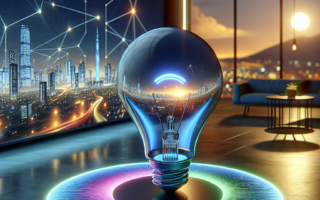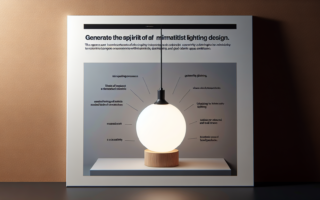Are you tired of traditional lighting solutions that drain your energy consumption and harm the environment? Look no further! In this article, we will explore the exciting world of innovative approaches to sustainable illumination. From energy-efficient LED bulbs to smart lighting systems, there are a plethora of eco-friendly options available today. Join us as we shed light on the latest technologies and strategies that not only brighten up your surroundings but also help protect our planet. Get ready to discover a new way of illuminating your world sustainably!
1. Energy-Efficient Lightbulbs
When it comes to sustainable lighting, energy-efficient lightbulbs are an excellent choice to reduce your carbon footprint and save on energy costs. There are several types of energy-efficient lightbulbs to consider, including LED lightbulbs, CFL lightbulbs, and halogen incandescent lightbulbs.
1.1 LED Lightbulbs
LED (Light Emitting Diode) lightbulbs are one of the most popular and efficient lighting options available today. They use significantly less energy than traditional incandescent bulbs, making them an excellent choice for sustainable lighting. LED lightbulbs are highly durable and long-lasting, with an average lifespan of around 25,000 to 50,000 hours. They are also mercury-free and do not emit harmful UV radiation, making them an environmentally-friendly option.
1.2 CFL Lightbulbs
CFL (Compact Fluorescent Lamp) lightbulbs are another energy-efficient option that can help reduce energy consumption. They use approximately 70% less energy than traditional incandescent bulbs and last around 10 times longer. CFL bulbs do contain a small amount of mercury, so proper disposal is crucial to prevent environmental contamination. Despite this, they are still a viable choice for energy-efficient lighting.
1.3 Halogen Incandescent Lightbulbs
Halogen incandescent lightbulbs are a variation of traditional incandescent bulbs that use halogen gas to increase energy efficiency. While they are not as energy-efficient as LED or CFL bulbs, they still offer better energy savings compared to standard incandescent bulbs. Halogen incandescent bulbs have a longer lifespan and provide a warm, high-quality light. However, they can get hot and may not be the most sustainable option in terms of energy conservation.
2. Solar-Powered Lighting
Harnessing the power of the sun, solar-powered lighting is an eco-friendly and energy-efficient solution for both indoor and outdoor illumination. Solar-powered lighting systems utilize photovoltaic panels to convert sunlight into electricity, which can be stored and used for lighting purposes.
2.1 Solar Garden Lights
Solar garden lights are an excellent way to enhance the aesthetics of your outdoor space while providing sustainable lighting. These lights are easy to install and do not require any wiring, as they are self-contained units with built-in solar panels and batteries. During the day, the solar panels collect sunlight to charge the batteries, and at night, the stored energy powers the LED lights, casting a gentle glow on your garden.
2.2 Solar Street Lights
Solar street lights are a practical and sustainable solution for illuminating streets, pathways, and other public areas. These lights are equipped with larger solar panels and higher-capacity batteries to ensure they can provide bright and consistent lighting throughout the night. Solar street lights are not only environmentally friendly but also cost-effective, as they eliminate the need for complicated electrical infrastructure and reduce energy consumption.
2.3 Solar Lanterns
For portable and versatile lighting, solar lanterns are a great option. These compact and lightweight lanterns are charged using solar power during the day and can be easily carried or hung in various locations. Solar lanterns are perfect for camping trips, outdoor activities, or as emergency lighting during power outages. They are an eco-friendly alternative to traditional battery-operated lanterns and provide a renewable source of light.

3. Bioluminescence as a Lighting Alternative
Drawing inspiration from nature, bioluminescence is an emerging field of sustainable lighting that utilizes organisms to create light. Bioluminescent lighting alternatives offer a unique and eco-friendly way to illuminate spaces.
3.1 Bioluminescent Algae
Bioluminescent algae, such as dinoflagellates, produce light through a natural chemical reaction. These algae can be cultivated and used in specialized lamps or containers, creating a captivating and sustainable light source. Bioluminescent algae require specific conditions, including water, nutrients, and proper lighting, to thrive and emit light. While this technology is still in its early stages, it holds great potential for sustainable lighting applications in the future.
3.2 Bioluminescent Mushrooms
Similar to bioluminescent algae, certain species of mushrooms possess the ability to produce light. These mushrooms contain an enzyme called luciferase, which reacts with a molecule called luciferin to emit light. Bioluminescent mushrooms can be utilized in various lighting applications, including decorative fixtures and nightlights. This natural and sustainable lighting alternative offers a unique and soothing glow, adding a touch of enchantment to any space.
3.3 Synthetic Bio-lights
Innovative approaches to sustainable illumination have also led to the development of synthetic bio-lights. These artificial light sources mimic the natural phenomenon of bioluminescence by utilizing genetically modified organisms or synthetic materials. Synthetic bio-lights offer the advantage of being customizable and controllable, allowing for precise lighting effects and intensity. While still in the experimental stages, synthetic bio-lights have the potential to revolutionize the way we illuminate our surroundings in a sustainable manner.
4. Daylight Harvesting
Daylight harvesting involves maximizing the use of natural daylight to illuminate indoor spaces, minimizing the need for artificial lighting during daylight hours. This approach not only reduces energy consumption but also provides a more pleasant and healthy environment.
4.1 Sensor-Controlled Lighting
Sensor-controlled lighting systems are a key component of daylight harvesting. These systems utilize occupancy sensors and light sensors to automatically adjust the artificial lighting based on the amount of natural light available. When sufficient daylight is detected, the sensors can dim or switch off the artificial lights, saving energy and ensuring optimal lighting conditions. Sensor-controlled lighting is particularly effective in spaces with ample natural light, such as offices, classrooms, and retail stores.
4.2 Smart Windows and Skylights
Smart windows and skylights are another innovative solution for daylight harvesting. These windows and skylights are designed with advanced glazing technologies that allow for control over the amount of daylight entering a space. Smart windows can adjust their tint or opacity based on external conditions, reducing glare and excessive heat while still allowing natural light to penetrate. Skylights with adjustable shading systems can regulate the amount of sunlight entering a room, optimizing daylight and minimizing energy consumption.

5. Fiber Optic Lighting
Fiber optic lighting offers a unique and sustainable way to illuminate spaces by utilizing light-conducting fibers. These fibers transmit light from a source to a desired location, allowing for versatile and dynamic lighting possibilities.
5.1 Fiber Optic Illuminators
Fiber optic illuminators are the heart of fiber optic lighting systems. These devices generate light and send it through the fiber optic cables to illuminate specific areas or objects. Fiber optic illuminators are often equipped with color-changing capabilities, allowing for creative and customizable lighting effects. These systems are increasingly used in architectural lighting, signage, and decorative applications, providing energy-efficient alternatives to conventional lighting methods.
5.2 Fiber Optic Skylights
Fiber optic skylights are an innovative way to bring natural daylight into interior spaces without the need for traditional skylights. These skylights consist of a panel or dome that captures and collects natural light, which is then transmitted to the desired location using fiber optic cables. Fiber optic skylights are particularly useful in areas where conventional skylights are impractical or not possible, such as interior rooms or buildings with limited access to natural light. By harnessing natural daylight, fiber optic skylights provide sustainable and aesthetically pleasing illumination.
6. Human Centric Lighting
Human centric lighting focuses on enhancing the well-being and productivity of individuals by replicating the natural variations of light throughout the day. By mimicking the qualities of natural daylight, human centric lighting aims to create a more comfortable and biologically supportive indoor environment.
6.1 Circadian Lighting
Circadian lighting aims to synchronize artificial lighting with the natural circadian rhythm of humans. The circadian rhythm is a 24-hour internal clock that regulates various physiological processes. By dynamically adjusting the color temperature and intensity of artificial lighting, circadian lighting can promote better sleep patterns, increase alertness, and improve overall mood and well-being. This type of lighting is particularly beneficial in environments where individuals spend significant amounts of time indoors, such as offices, healthcare facilities, and educational institutions.
6.2 Tunable White Lighting
Tunable white lighting allows for the control and adjustment of the color temperature of artificial lighting. This technology enables the creation of different lighting scenes that mimic the natural variations of daylight. Tunable white lighting systems can provide cool, energizing light in the morning and warm, relaxing light in the evening, enhancing the overall comfort and productivity of individuals. This type of lighting is commonly used in residential settings, offices, and retail environments to create a more pleasant and adaptable lighting experience.

7. Kinetic Energy Harnessing Lights
Kinetic energy harnessing lights utilize motion or mechanical energy to generate electricity for lighting purposes. These sustainable lighting solutions are particularly effective in areas where access to electricity is limited or as a way to reduce energy consumption.
7.1 Motion-Sensor Lights
Motion-sensor lights are a practical and energy-efficient option for outdoor and security lighting. These lights are equipped with sensors that detect movement and automatically turn on the light when someone enters the vicinity. Motion-sensor lights are commonly used in driveways, pathways, and other outdoor areas where lighting is needed on demand. By only activating when motion is detected, these lights help conserve energy and provide a sense of security.
7.2 Piezoelectric Lighting
Piezoelectric lighting systems harvest energy from mechanical vibrations or pressure and convert it into electricity to power the lights. This innovative technology can be applied to various surfaces, such as floors, sidewalks, or even furniture, to capture and utilize energy generated from human movement or ambient vibrations. Piezoelectric lighting offers a sustainable and self-sustaining lighting solution, especially in high-traffic areas or public spaces where the energy potential is significant.
8. Innovative Materials for Sustainable Illumination
The development of innovative materials has opened up new possibilities for sustainable illumination. These materials offer improved energy efficiency, durability, and design flexibility, contributing to environmentally-friendly lighting solutions.
8.1 Graphene-Enhanced Lighting
Graphene, a two-dimensional form of carbon, has remarkable electrical and optical properties that make it a promising material for enhancing lighting efficiency. Graphene can be incorporated into LED lightbulbs to improve heat dissipation, resulting in increased energy efficiency and longer lifespan. Additionally, graphene can be used for transparent electrodes, enabling flexible and transparent lighting solutions. With ongoing research and development, graphene-enhanced lighting presents exciting opportunities for sustainable illumination.
8.2 Organic Light Emitting Diodes (OLEDs)
Organic Light Emitting Diodes (OLEDs) are a type of lighting technology that offers significant energy savings and design versatility. OLEDs consist of thin layers of organic compounds that emit light when an electric current passes through them. Unlike traditional LEDs, OLEDs emit light over a larger surface area and can be fabricated on flexible substrates, allowing for unique shapes and applications. OLED lighting provides a natural and soft illumination, making it suitable for various settings such as residential, commercial, and automotive lighting.

9. Light Pollution Solutions
Light pollution, the excessive or misdirected artificial light, has become a growing concern that has adverse effects on the environment, wildlife, and human health. Implementing light pollution solutions is crucial to create a more sustainable and dark-sky-friendly environment.
9.1 Dark Sky Lighting
Dark Sky Lighting focuses on minimizing light pollution and preserving the natural darkness of the night sky. This lighting approach aims to reduce unnecessary or excessive outdoor lighting by utilizing fixtures that direct light downward with minimal spillage. Dark Sky Lighting fixtures are designed to shield the light source and use optics to direct the light precisely where it is needed, minimizing light trespass and skyglow. By embracing Dark Sky Lighting principles, we can contribute to preserving the beauty of the night sky and reducing wasted energy.
9.2 Shielded Light Fixtures
Shielded light fixtures are another effective solution to reduce light pollution. These fixtures feature a design that directs light downward, preventing it from escaping upward or laterally. By employing shielded light fixtures, the emitted light is focused where it is necessary, minimizing the impact on the surrounding environment. Shielded light fixtures can be used in various outdoor applications, including street lighting, parking lots, and outdoor recreational areas, to provide efficient illumination while mitigating light pollution.
10. Sustainable Lighting Design Practices
In addition to specific lighting technologies, incorporating sustainable lighting design practices is essential to achieve optimal energy efficiency and minimize environmental impact.
10.1 Task Lighting
Task lighting involves providing focused illumination for specific tasks or activities. By illuminating only the area where light is needed, task lighting reduces energy consumption and eliminates the need for excessive ambient lighting. Examples of task lighting include desk lamps, under-cabinet lighting in kitchens, and reading lights. Incorporating task lighting into your space not only saves energy but also enhances visual comfort and productivity.
10.2 Accent Lighting
Accent lighting enhances the aesthetic appeal of a space by highlighting certain objects, architectural features, or artwork. By selectively illuminating focal points, accent lighting creates visual interest and depth. To achieve sustainable accent lighting, LED spotlights or wall-mounted fixtures with directional control can be used. These energy-efficient options ensure that the accents are adequately highlighted while minimizing unnecessary energy consumption.
10.3 Efficient Light Placement
Strategic placement of lighting fixtures is crucial in achieving optimal energy efficiency and reducing light wastage. By considering factors such as the natural light available, the purpose of the space, and the desired lighting ambiance, you can determine the most efficient locations for light fixtures. Avoid overlighting spaces and opt for fixtures with appropriate lumen output to ensure adequate illumination without unnecessary energy usage. Additionally, utilizing daylight harvesting techniques, such as integrating sensors and manual controls, can help regulate artificial lighting and minimize energy waste.
In conclusion, sustainable lighting solutions encompass a wide range of innovative approaches that prioritize energy efficiency, environmental conservation, and human comfort. From energy-efficient lightbulbs to solar-powered lighting, bioluminescence, daylight harvesting, and more, there are numerous options available to reduce energy consumption and minimize the negative impacts of lighting on the planet. By embracing these sustainable lighting practices and technologies, we can contribute to a brighter and greener future.



